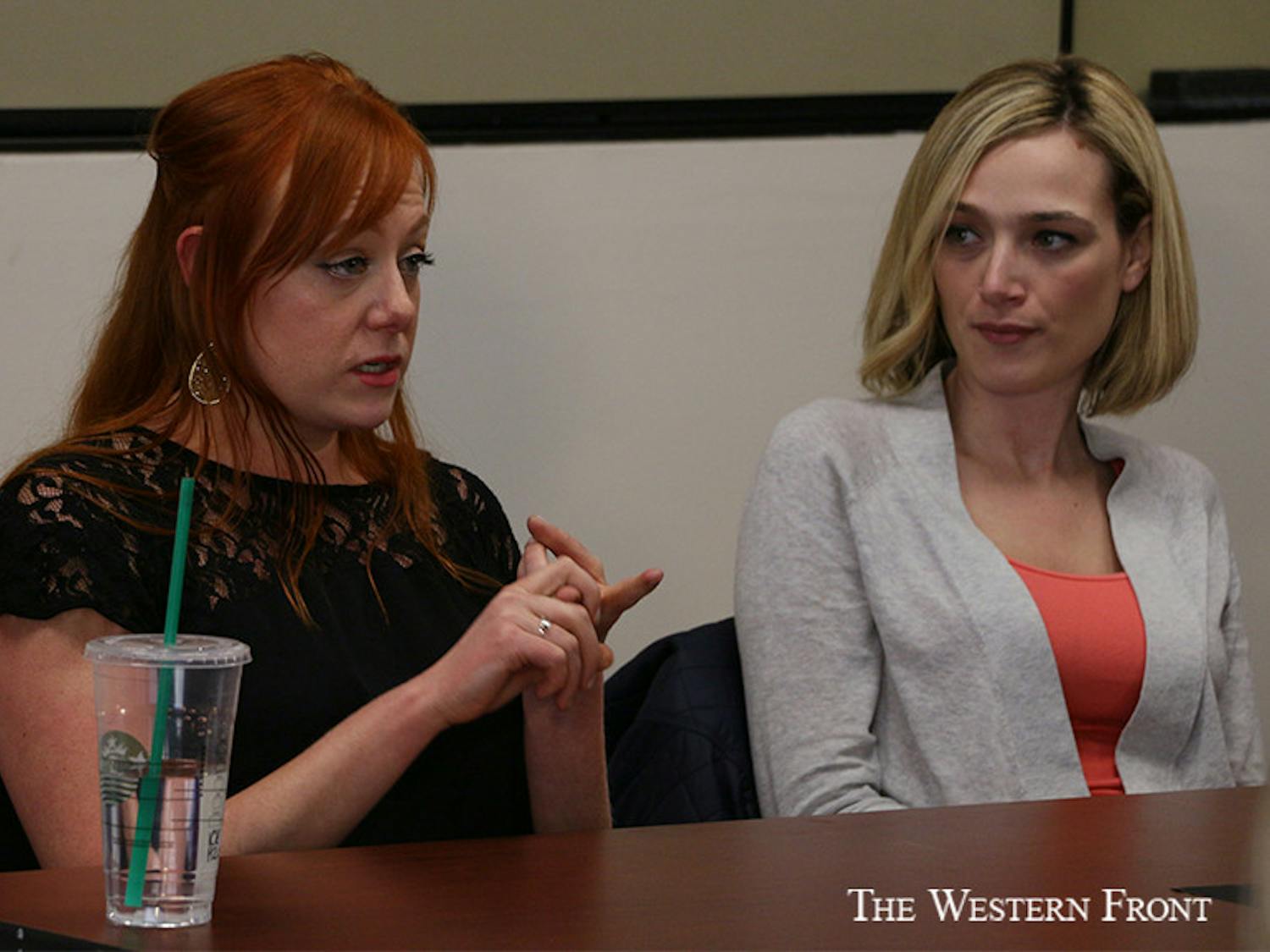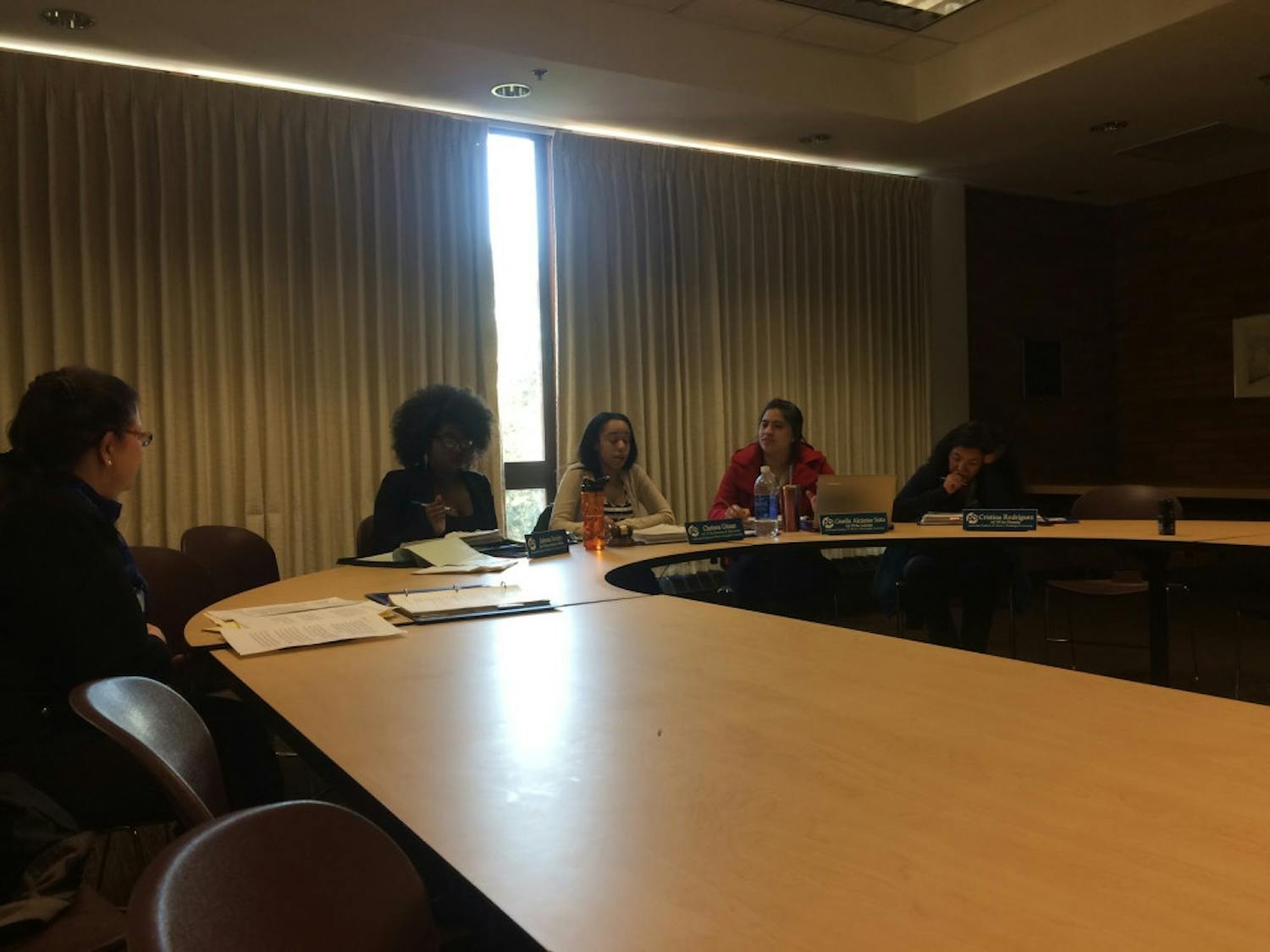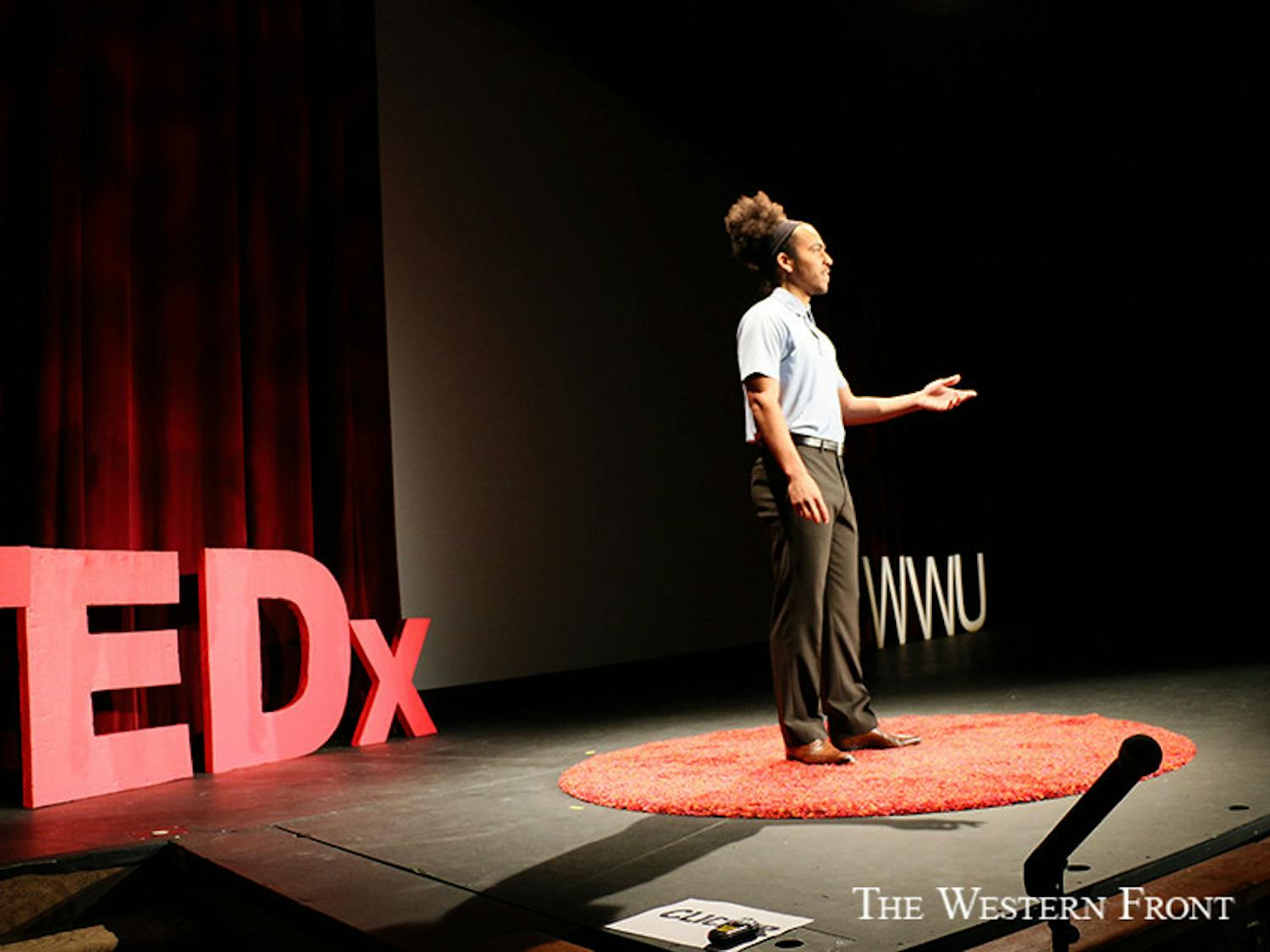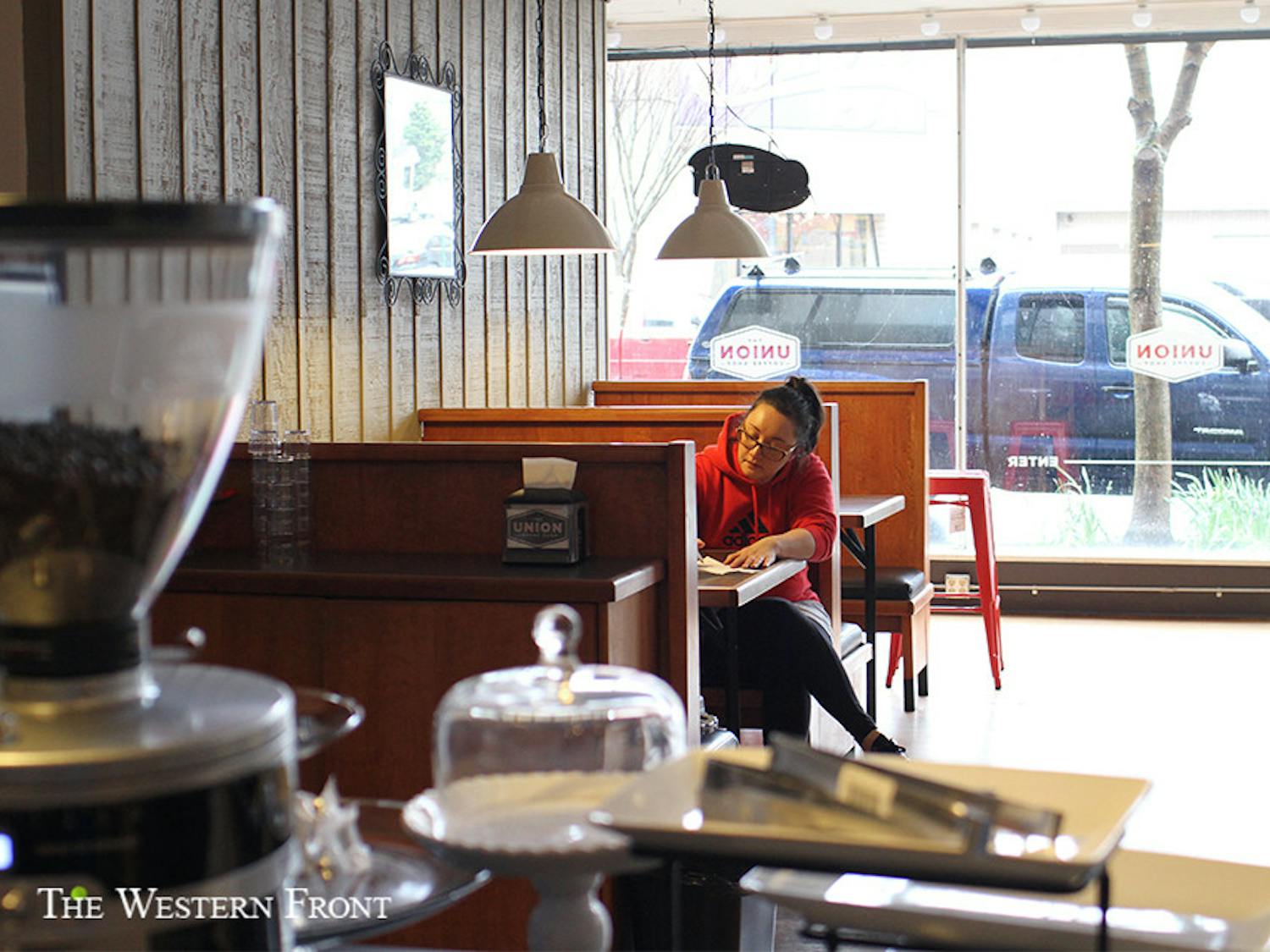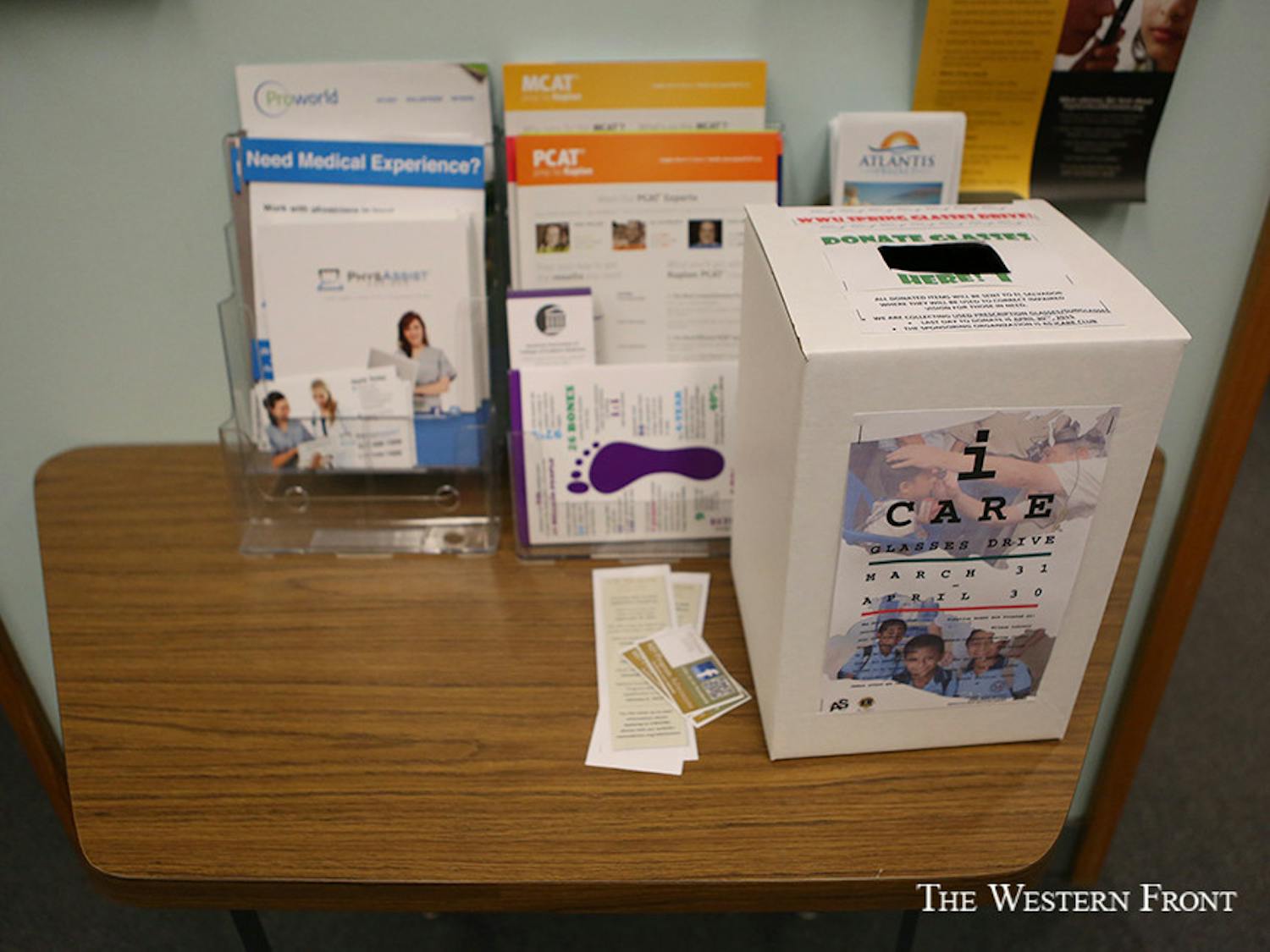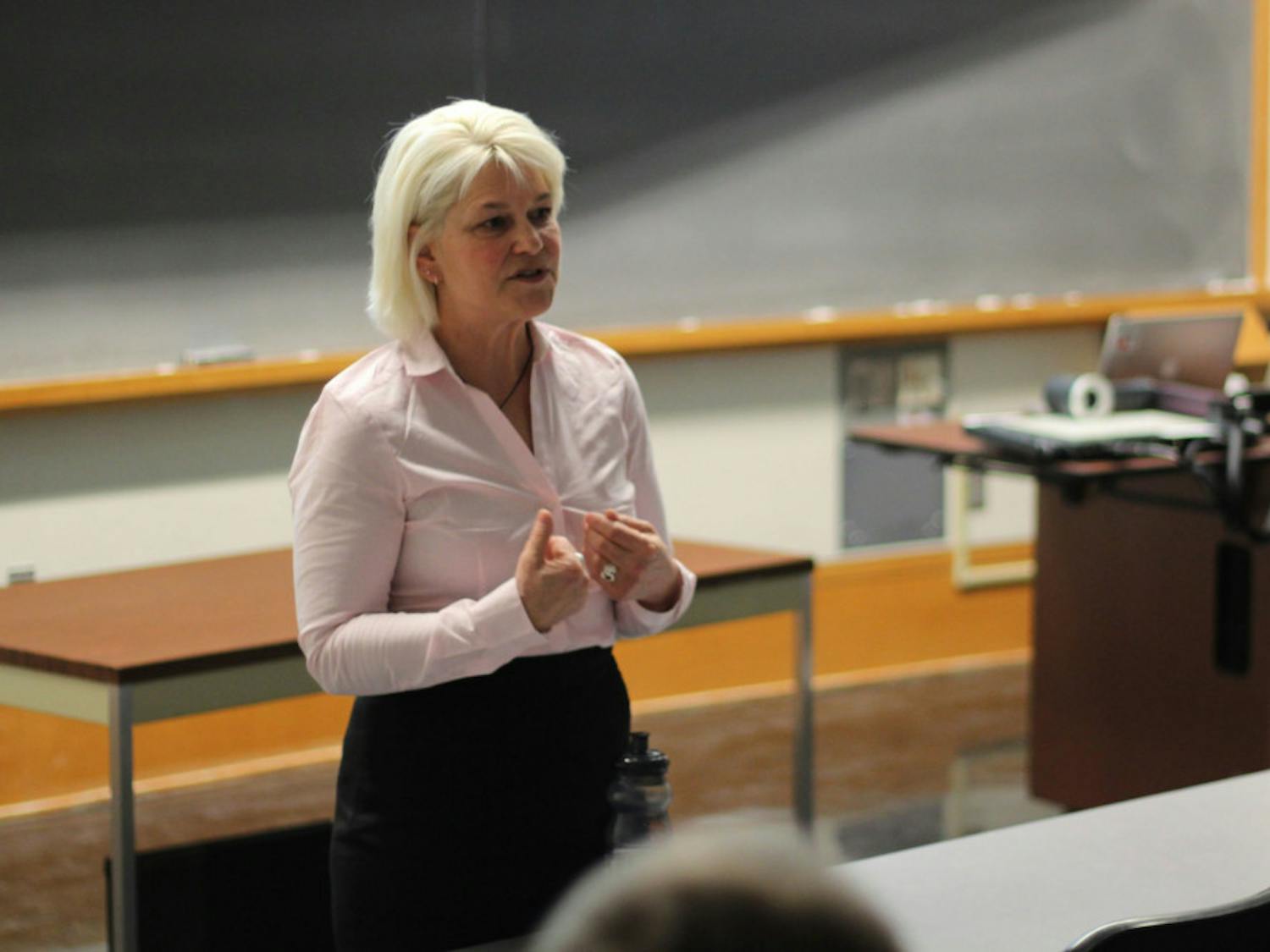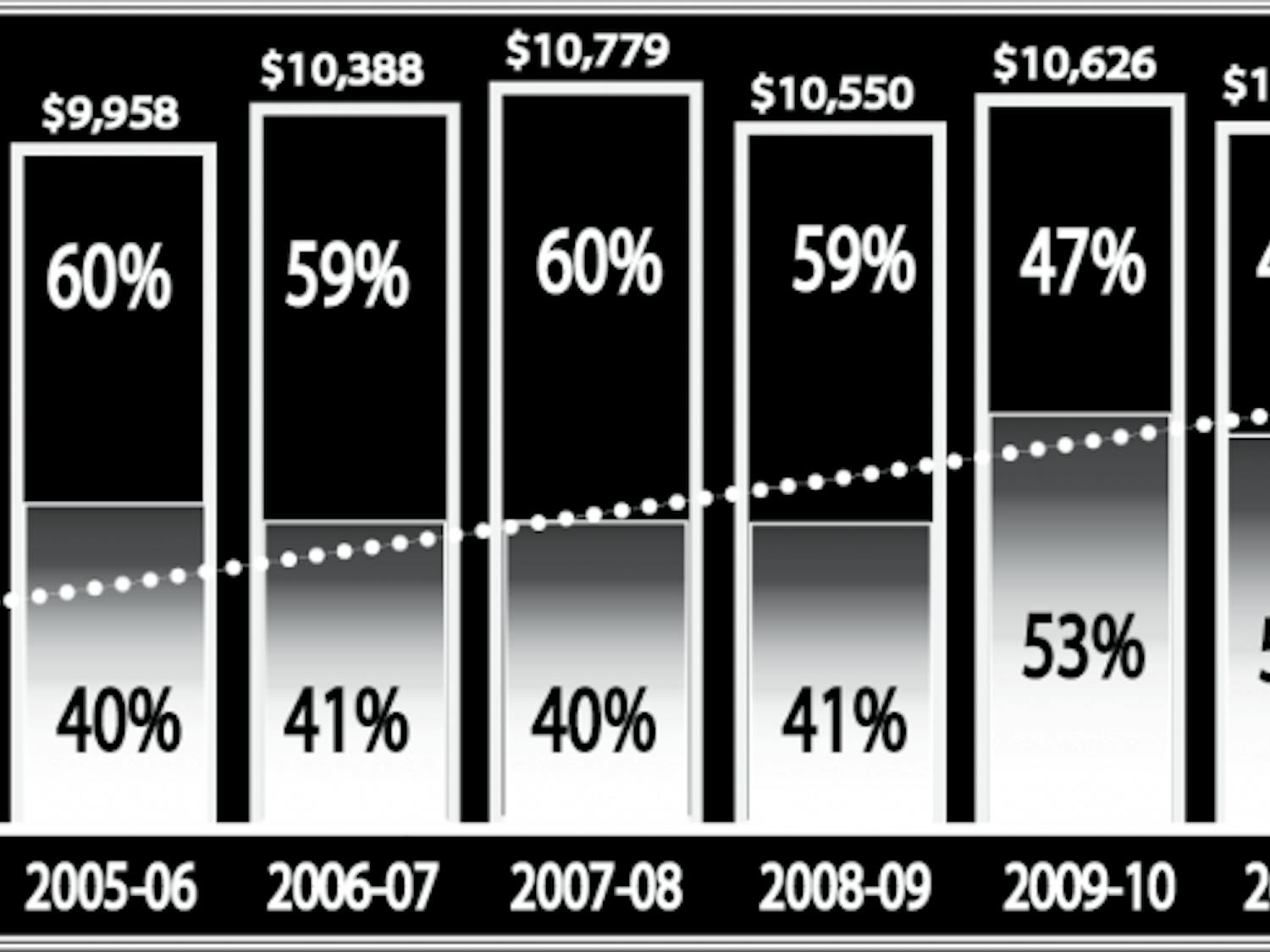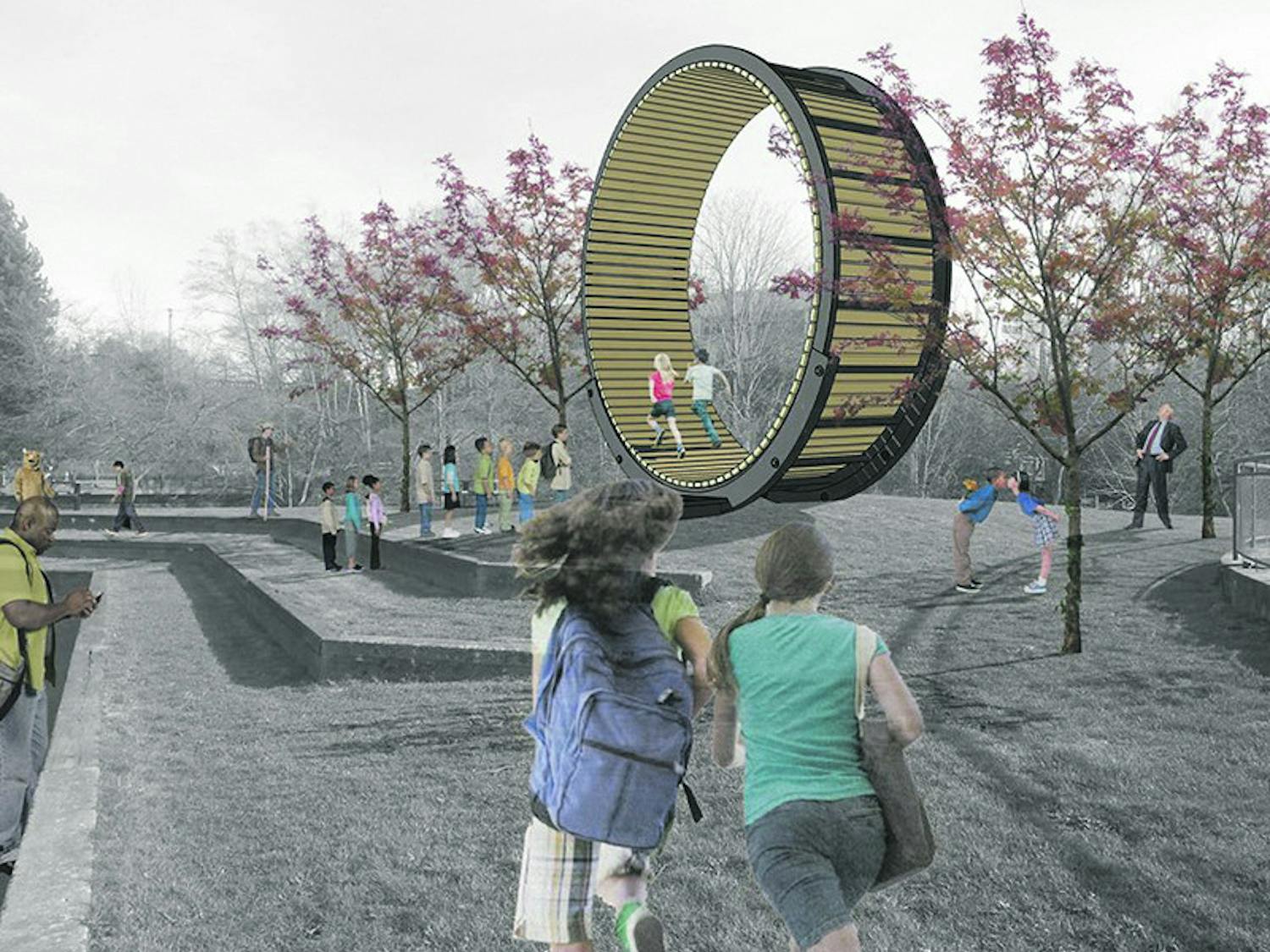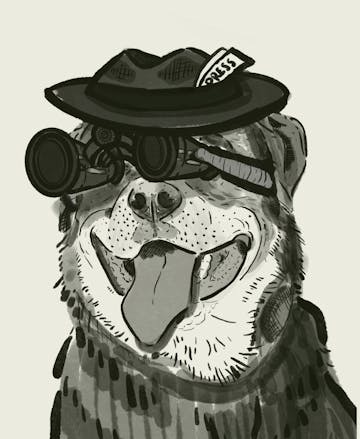News
Western professor closes series on history of race and politics
By The Front | April 16In the wake of anniversaries of mid-century civil rights milestones such as the Selma to Montgomery March, Affirmative Action, and the Voting Rights Act of 1965, professor of political science Dr. Vernon Johnson asked, “How far have we come?” Bellingham Central Library approached Johnson to do the third of a three-part lecture series on the history of the relationship between race and politics, which wrapped up on Wednesday, April 15. His lecture “Mid-Century Dream to Today's Reality: All the Ways that Race Still Matters” explored the ideas and expectations of the Voting Rights Act and Affirmative Action contrasted with recent events that challenged these ideals. Such events include recent Supreme Court rulings as well as recent allegations of police brutality in the deaths of Mike Brown, Eric Garner, Walter Scott and others. In 2013, the Supreme Court removed section four of the Voting Rights Act so that states that needed authorization to change their voting procedures no longer needed to do so. According to Johnson, “states that have a history of preventing people of color from voting” are no longer under scrutiny. Last year, the Supreme Court ruled Affirmative Action unconstitutional in Michigan universities, although federal policy stands. In attendance was Dennis Lane, a Bellingham resident associated with the nonprofit Whatcom Community Television and Communications and friend of Johnson. “He mentioned Ferguson a lot,” Lane said. “Ferguson, to me, was a way small-town police and small-town governments were able to balance their budget because of white flight. Stopping black for broken tail lights, incarcerating them, becomes a way in which Ferguson survives.” Matthew Stidham, a senior at Western Washington University and a student in Johnson’s class on race and public policy, received extra credit for attending the lecture. “I’m getting more context on top of what I got from class and getting [to hear] questions from the community. He talked about some local politics like with the new jail and immigration policy,” Stidham said, referring to discussion during the question and answers portion on the discussion of a new jail coming into the area. Johnson has been a faculty member in the Department of Political Science at Western since 1986. When anti-government violence became an issue in Bellingham in the 1990s in the form of cross burnings and racially motivated violence, he helped found the Whatcom Human Rights Task Force and chaired its board from 1997 to 2000. The lectures took place on the two Wednesdays prior to Wednesday, April 15. The first in the series was about the Anti-Hindu Riots in Bellingham in 1907 and the second was on persecution of left-wing individuals during McCarthyism.
Man exposes himself to female student near north campus
By The Front | April 16A report has been made of a man in a gold SUV exposing himself to a female student as she walked the area of Cedar and Forest Streets at 11:55 a.m. on Thursday, April 16. The man is described as a white male in his late 20s with tan skin, short brown hair, dark eyes and wearing a dark blue shirt. The vehicle is thought to have a license plate beginning with “AR1” or “ARI.” Police are asking anyone who sees this suspect or vehicle to call 911.
Students receive hefty grant for "smart windows" design
By The Front | April 15A team of students from Western and the University of Washington has won a $75,000 grant for their prototype of a Smart Solar Window. The project was presented at the Environmental Protection Agency’s P3 People, Prosperity and the Planet competition April 11-12 in Washington DC. The student team constructed a completely transparent window that, like a solar panel, harnesses the energy of the sun and converts it into energy that could be used to power the building around it. According to the team's project description on the competition's website, the development and installation of these "smart windows" could reduce a building's footprint by lowering the amount of power it uses from outside sources to power heating, ventilation and air conditioning systems. "The team did a wonderful job, winning their category against other top university teams from around the country with their very impressive prototype and business plan," Western Professor David Patrick said in an email, who accompanied the team to the competition in DC. "I couldn't be more proud of the way they represented themselves and Western." The event is hosted by the United States Environmental Protection Agency and projects are brought before a panel of experts created by the American Association for the Advancement of Science, according to the competition's website. The EPA considers projects that address water, energy, agriculture, built environment, and materials and chemicals.
Second TEDxWWU event sells out the PAC
By The Front | April 14More than 1,000 people filed into the Performing Arts Center for Western’s second independent Technology, Education and Design (TED) conference. Understanding fear, humans using fire in evolution, and transgender inclusion in the NCAA were a few topics discussed Saturday, April 11. TEDxWWU received 70 applications from professors, students and members of the community for potential speakers. It was narrowed down to 13 applicants chosen.
Western club brings Israeli soldiers to campus
By The Front | April 14Two Israel Defense Force (IDF) soldiers told stories at Western about their journey and insight into Israeli politics.
The Union Coffee Shop is gaining a second location
By The Front | April 14After almost two years of business, the Union Coffee Shop is making another splash into the Bellingham coffee scene by opening a new location on State Street on Wednesday, April 15.
iCare Club gives old lenses new homes
By The Front | April 14The iCare Club is working in partnership with the Bellingham Central Lions Club to collect these glasses. All of the donated glasses will be given to those in rural communities in El Salvador where many families are unable to afford eye care.
Price of living on campus set to rise
By The Front | April 14Room and board is about to get more expensive on Western’s campus. The Western Board of Trustees unanimously passed a measure to increase housing and dining costs by 3 percent during its meeting Friday, April 10.
World-renowned pianist comes mixes classical and modern styles
By The Front | April 13Rapidly fired piano notes ring through the Performing Arts Center concert hall Saturday, April 11, as world-famous pianist Gilles Vonsattel performed, as part of the Sanford-Hill Piano Series, at Western Washington University. Jeffrey Gilliam, artistic director of the production, introduced Vonsattel as “a real renaissance musician of our time,” before the performance. Around 150 people showed up for the performance with a mixed crowd of students and people from the greater Bellingham area. “I think he’s an incredibly colorful pianist. He’s very careful about his sound, like nothing goes amiss,” Andrea Rackl, a 38-year-old Western alumna, said. “He’s obviously thought everything out so well and cares very much about every sound that he makes; which I really appreciate.” The pieces Vonsattel played were a mix of classical and modern compositions mainly focused around the third piece composed by modern day composer George Benjamin. “There are certain composers, like Benjamin, who are very gifted and are interested in continuing the tradition of [classical style],” Vonsattel said about his music choice for the show. Vonsattel was born in Switzerland but later moved to earn his bachelor’s degree political science and economics from Columbia University and Master of Music from Juilliard School in New York. Since 2002, the Sanford-Hill Piano Series has brought world famous pianists to Western’s campus three times per year. The featured artists give a performance and also hold a master class for students who are interested in learning and receiving a lesson from famous musicians. Lindsay Abuyan, a 19-year-old Western student, doesn't get to see piano performances very often and enjoyed Vonsattel’s performance, she said. “I think they’re very interesting,” Abuyan commented on the performed pieces. “It’s not what I was expecting; it’s very modern. They’re very atonal and a lot of them don't really follow a melody line like most pieces.” Former music major and Western student, Sean Urann, also plays piano and was extremely impressed with Vonsattel’s skill as well as the overall tone of the show. “I think it’s cool; it’s kind of a darker sound than I was anticipating,” Urann said, “but I think all the chaos is pretty cool to see how he rounds [the piece out] and brings it together.” The day after the performance Vonsattel held a master class for skilled Western student pianists to attend and perform in front of him and receive critique and feedback on their performance from Vonsattel himself. At this session Vonsattel gave a piece of advice for anyone aspiring to become a pianist themselves. “I would, as much as possible, try to inform yourself about what's going on out there, which really takes time,” Vonsattel said. “I think also realize that there are many many useful careers and useful paths. You can take that require imagination and thought beyond your playing.”
War of 1812 exhibit commemorates Canadian-American relations in Wilson Library
By The Front | April 13Western Washington University has opened a traveling exhibit commemorating the recent bicentennial of the War of 1812 in Wilson Library. Heritage Resources and the Center for Canadian-American Studies at Western co-sponsored the special exhibit. The collections were originally curated by the Canadian War Museum and delivered to Western through the Canadian Consulate in Seattle. The Canadian government, including Canadian Heritage, the Canadian War Museum and Canadian Embassy in the District of Columbia, supported the exhibit as one of the promotions that celebrates the 200 years of peace between Canada and the United States. The Canadian Consulate in Seattle offered Western Libraries this opportunity, and they gladly accepted to have it in Wilson Library for this spring quarter, David Rossiter, director of the Center of Canadian-American Studies, said. “Probably the reason why we are hosting it is partly because the Canadian-American Studies Center is here,” he said. Western is one of two universities designated by the United States Department of Education as part of the National Resource Centers on Canada, according to the Western Center of Canadian-American studies website. There is another center at the University of Washington. “Being located 25 miles south of the Canada-U.S. Border and the Peace Arch which was erected to celebrate the centennial of the end of the War of 1812, [Western] is a most fitting venue to host the final display of these two travelling exhibits,” Kevin Cook, Consulate General of Canada, said in an email. The War of 1812 is known as relatively a minor conflict in the history between the United States and Great Britain. However, as you dig into more details on the meaning of this historical turning point to each group of people, American, Canadian, British and Native American, you findthat each of them perceived the war in a different way, Elizabeth Joffrion, director of Heritage Resources at Wilson Library, said. “The important thing is that it looks different perspectives around the meaning of that war,” Joffrion said. “It commemorates the peace.” The main part of exhibit is held on the sixth floor of Wilson Library in Special Collections and some other pieces are also displayed in the fourth floor Floor Rotunda. On the Floor Rotunda, there are two large panels in front of the entrance toward the reading room. Those panels are two-sided, and different perspectives of the war from not only the United States and Britain, but also Canada and Native American’s First Nations cover each panel. “That’s the piece of history that sometimes gets forgotten because of the power dominance,” Joffrion said. The exhibit will be on display and available for viewing until Friday, May 29, Monday through Friday between the hours of 11 a.m. to 4 p.m, according to Western Libraries’ website. “We have a lot of focus visiting up here,”Joffrion said. “We had a steady stream of people from the community up here, which is really nice, too.” Western has proposed the series of events called Active Minds Changing Lives Week, which intends to collaborate a wide variety of educational subjects at Western. As a part of it, Dr. Jared Hardesty, history professor at Western, will give a presentation titled “Expanding our Understanding of the War of 1812: Looking Beyond America’s Border” at 4 p.m. on Wednesday, April 15, in Special Collections, which is located on the sixth floor of Wilson Library. “I want the users to come interpret the meaning themselves. That’s the purpose of exhibit,” Joffrion said. “It’s not tell you what to think, but help you to think in new ways about the War of 1812.”
Western assistant professor speaks about future of Curiosity Mars Rover
By The Front | April 12Western assistant professor of geology Melissa Rice discussed NASA’s Mars Rover Missions and new discoveries found on Mars at City Council on Tuesday, April 7. The audience was given a pair of 3-D glasses when the presentation began; Rice shared new 3-D images of Mars that were accentuated with the glasses. Rice began by talking about the history of Mars and how Mars had its start in the science fiction world because not much was actually known about the planet. “It was generally accepted that Mars could be a world that was alive with life,” Rice said. Rice, who is a part of two NASA Mars rover teams, explained the importance of scars from ancient river valleys being discovered on Mars by these rovers. “Mars had to at least have been more interesting than it is today,” Rice said. The presentation involved a 3-D Mars tour showing landscapes including seas of sand dunes on the planet, the most active geologic process occurring on Mars today, Rice said. NASA’s most current rover expedition is the Curiosity Rover, which landed on Mars two years ago, Rice said. Rice explained Curiosity’s job is to discover evidence that water once existed on Mars, a mission that is proving successful. While showing real footage of the rover landing, Rice said NASA knew immediately that they had landed in an ancient streambed. “We hope to uncover the secrets of Mars with our robot army,” Rice said. “Was Mars a place where life could’ve thrived and survived?” NASA’s Curiosity mission is funded by taxpayer dollars and access to information and all photos related to the mission are available for the public to view at mars.nasa.gov. Western students Andrew Lindsey and Dave Stanfield both came to the lecture out of interest for the new discoveries and footage that was being shown. “It’s been really cool to what has been going on and what the actual mission plan was,” Lindsey said. Stanfield said he didn’t realize NASA posts the resources to their website as soon as they are available. “I tried to follow [Curiosity’s landing] as closely as I could without being fanatical,” Stanfield said. Rice stressed that if there is to be more exploration on Mars, samples need to make their way back to Earth, which is a hard task to achieve. “The most important thing we can do to better understand Mars is to bring Mars back to Earth,” Rice said. The next rover going to Mars will be in 2020 and will attempt to capture samples of rocks while on the planet, Rice said. To help NASA figure out where on the planet to place the new rover, Rice will be working with Western graduate students this summer to decide where the rover should land.
Tuition cuts in the works for next year
By The Front | April 10Republicans in the state Senate are proposing a bill that could possibly lower college tuition by 25 percent at state universities and colleges.
Run on, Bellinghamsters: World's largest human hamster wheel proposed
By The Front | April 10Bellingham residents and tourists alike may soon find another attraction within the city of subdued excitement — the world’s largest human hamster wheel.
New restaurant comes to Carver
By The Front | April 10Students can expect a new restaurant on campus as a part of the Sam Carver Gymnasium renovation proposed in this year’s budget.
Governor Inslee makes virtual appearance
By The Front | April 10From Olympia, Governor Jay Inslee joined Western students and statewide universities in a virtual conference about climate change and a proposal for action Tuesday, April 7.
A new owner and a new plan for Lakeway apartment complex
By The Front | April 9After plans to build a new student-oriented apartment complex next to the Lakeway Fred Meyer were called off in 2014, a new developer has taken the reigns to begin construction.
Topics from across campus discussed at first AS meeting of the quarter
By The Front | April 9The first spring quarter meeting of the Associated Students Board of Directors highlighted potential projects from across campus.


